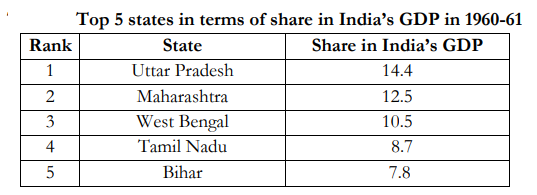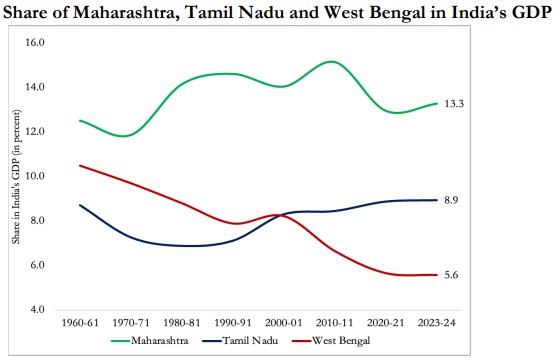7667766266
enquiry@shankarias.in
Recently, Economic Advisory Council to the Prime Minister (EAC-PM) has released the paper ‘Relative Economic Performance of Indian States: 1960-61 to 2023-24’.


|
Regional Growth (1960-2023) |
|
|
Southern Region |
|
|
Western Region |
|
|
Eastern Region |
|
|
Northern Region |
|
|
Central Region |
|